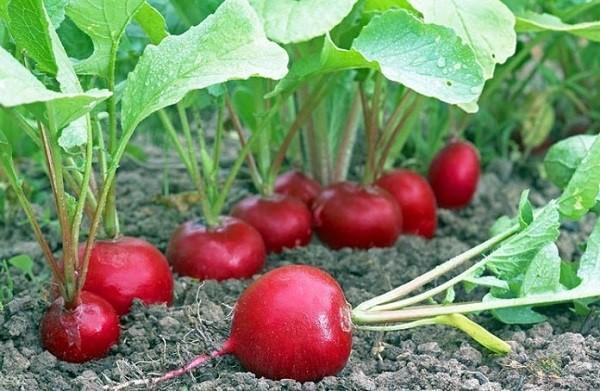We reveal the secrets of growing radishes in summer cottages
 Everyone's favorite radish is a permanent inhabitant of garden beds, which from year to year in early spring are sown by gardeners. Most grow it directly in the open field, since radish is not afraid of cold weather. And gardeners who have greenhouses or greenhouses allocate several beds and under radishes, which allows them to harvest the first crop much earlier.
Everyone's favorite radish is a permanent inhabitant of garden beds, which from year to year in early spring are sown by gardeners. Most grow it directly in the open field, since radish is not afraid of cold weather. And gardeners who have greenhouses or greenhouses allocate several beds and under radishes, which allows them to harvest the first crop much earlier.
However, both of them often face problems when the result of their efforts does not quite correspond to the expected. Often, instead of elastic juicy root crops, hollow and cracked roots grow, or there are none at all as a result of tall arrows heading in the garden.
To avoid such problems, you must strictly adhere to the recommendations for growing radishes. Don't be scared, you won't have to do anything difficult. It is enough just to provide landings:
- regular watering;
- periodic feeding;
- loosening the soil;
- thinning of seedlings.
And, of course, it is important to harvest on time as it ripens. Too sooner or later, plucked radishes can taste bitter.
Watering frequency
To avoid blooming, the garden beds should be watered 2-3 times a week. In order for moisture to stay in the soil longer, it is advisable to lay peat in the aisles.
Do not allow the soil to dry out in the garden. If you water the radish abundantly after a drought, it will crack.
But tough and fibrous radishes are obtained as a result of too high air temperature, which, unfortunately, cannot be changed. This, as they say, is force majeure. By the way, in dry summers, shooters are most often observed.
Features of dressings
For a bountiful harvest of a tasty root vegetable, use nitrogen fertilizers... During the growing season, radishes can be fed with superphosphate at the rate of 15 g per 1 sq. m. or a solution based on potassium sulfate (20 g of the drug per 15 liters of water).
So that they do not talk about the benefits of fresh manure, it is completely contraindicated for radish.
If the soil is fertile, a single top dressing is enough; otherwise, you will need to fertilize the radish at least twice.
Loosening and thinning plantings
To ensure free air access to the roots, after each watering, you need to loosen the aisles, but without fanaticism, otherwise you can cut the roots with a hoe or damage the fruits.
As necessary, seedlings should also be thinned out, leaving the strongest ones. A thickened bed will not give anything except arrows and small radishes.